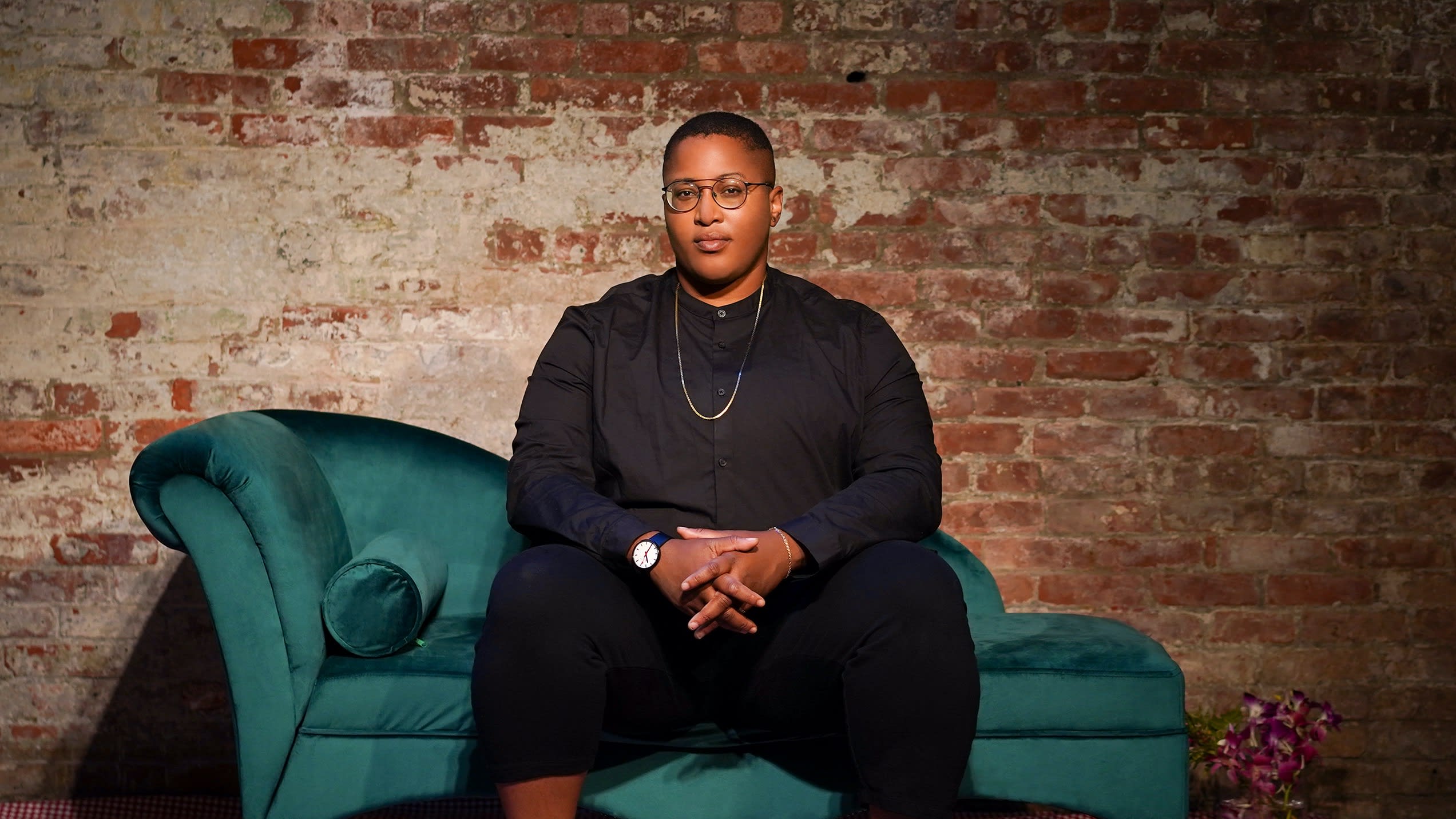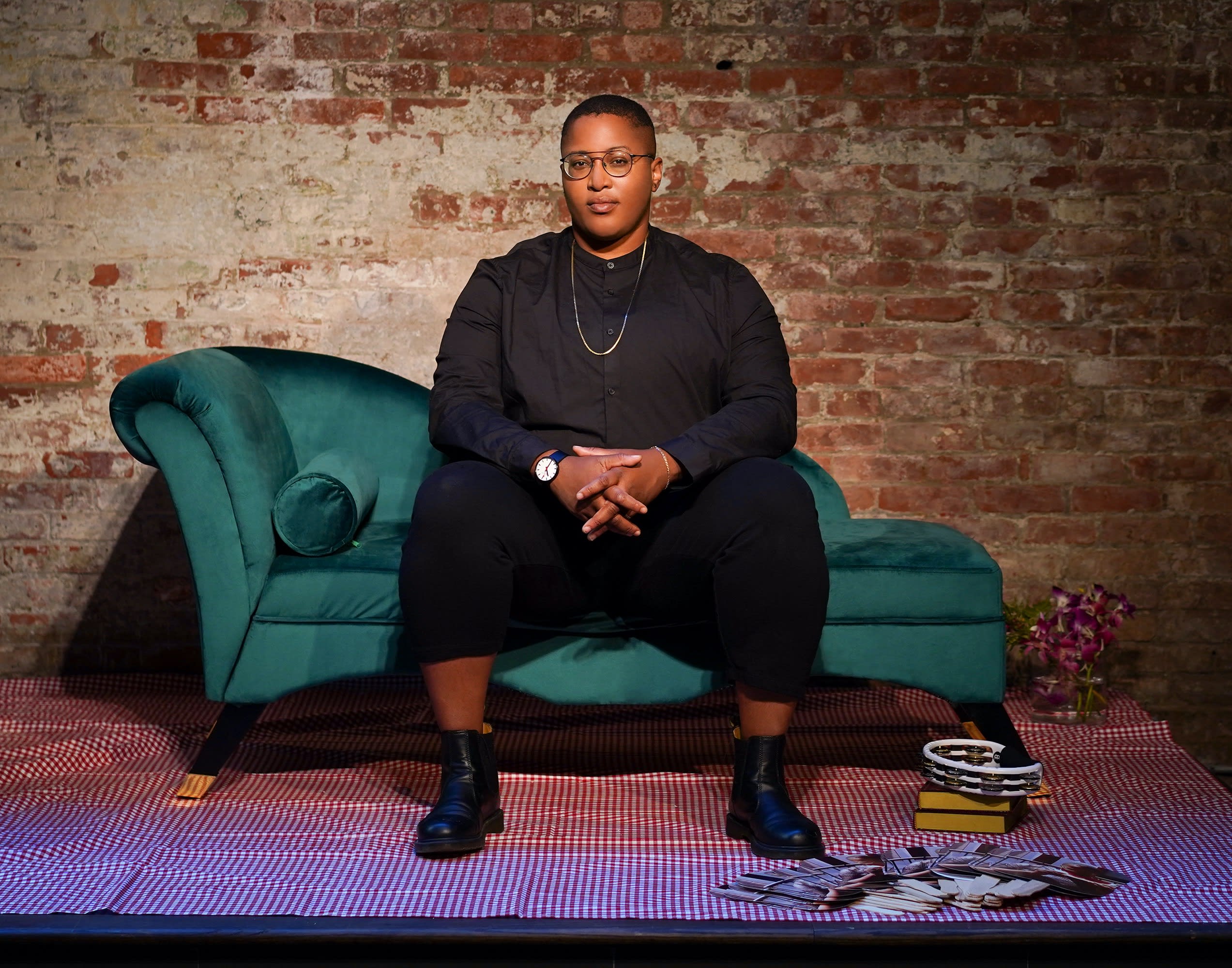
Sloan Leo (Photo: Julia Parris)
Sloan Leo’s energy is palpable, especially when they talk about community design. Their passion for hive thinking leaps off the screen, and you realize you don’t need to be in the same room to collaborate on changing the world.
Leo joined the SVA community in 2020 as Designer in Residence and faculty member in SVA’s MFA Design for Social Innovation Department (DSI). In the summer of 2021, Leo inaugurated the two-week intensive Community Design for Leaders: Moving Beyond Diversity, Equity, Inclusion (DEI) to Power, Belonging and Interdependence (PBI). This annual engagement helps fund an Equity in Design scholarship for SVA’s DSI program. As Founder and CEO of FLOX Studio Inc, a community design and strategy studio, Leo has been busy cultivating responsible, innovative organizational models across the social sector, in partnership with their dedicated team of thought leaders.
We sat down with Leo to discuss their vision for community design, building brave spaces, and inspiring leaders in the twenty-first century.

"Community design requires you to have a ‘spidey sense’ about emergent ideas,” says Sloan Leo.
What is community design?
I define community design as a framework, mindset and toolset that’s about building community power and relocating decision-making. It’s co-designing for collectives—organizational structure, strategy and communication. It’s asking: What is going to make it possible for all of us to understand the same set of knowledge or insights, and then what are our options for how we act as a group? It’s rooted in models of collective governance and cooperatives, and looking at their practices in terms of social technologies, different types of facilitation, and different types of thinking.
Community design requires you to have a ‘spidey sense’ about emergent ideas, because emergent ideas are very delicate. For all new clients, we do a community design lab. It’s our version of a design sprint. It’s a really key tool for us because it means we can go to an organization that has zero space in the culture for innovation, risk and creativity, and help them generate new ideas. We use time boundaries to decrease the preciousness of new ideas. We also do a lot of accelerated strategic planning, and part of that is developing different types of visualizations.
How do visual strategies challenge traditional models?
We put a lot of work into creating very simple visualizations. We want to help nonprofits and organizations that have a heart-driven mission get out of the text labyrinth.
For example, a typical ‘theory of change’ visual model uses lots of boxes, which is very hierarchical. One of our key mottos is ‘Less Squares, More Circles.’ Squares are always used to represent a stack of power that is compressed, whereas circles often lead to something more like a ‘theory of impact.’
We think of power-building as something like a sun, which has a core—a nucleus that creates momentum that spirals out. We think a lot about the power of a universe, and try to open the aperture of our clients’ understanding of how power is built and who is part of that process of building power. It’s about revealing known information versus unknown information—we call it ’Universe Mapping’. If you’re the CEO, you’re actually the embodied connection between the past and the future, and the known and the unknown. And that’s where you have a lot of room for unknown beautiful futures.
Why is it important to develop new approaches to organizational design?
People come to nonprofits because they have faith in the power of collectives to make change, and then the rigor they use to do that is mostly informed by the corporate sector and foundation guidelines, which are also run by corporate people. So we actually have to reclaim how we work in nonprofits. Community design offers generative pathways to work together much more effectively and meaningfully.
Follow our updates and stories on Facebook, Twitter, LinkedIn and Instagram. And meet the SVACE community by reading our new issue of SVA ContinuEd in print or digital versions!

